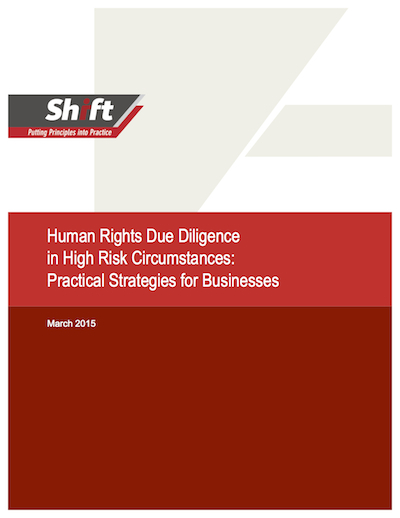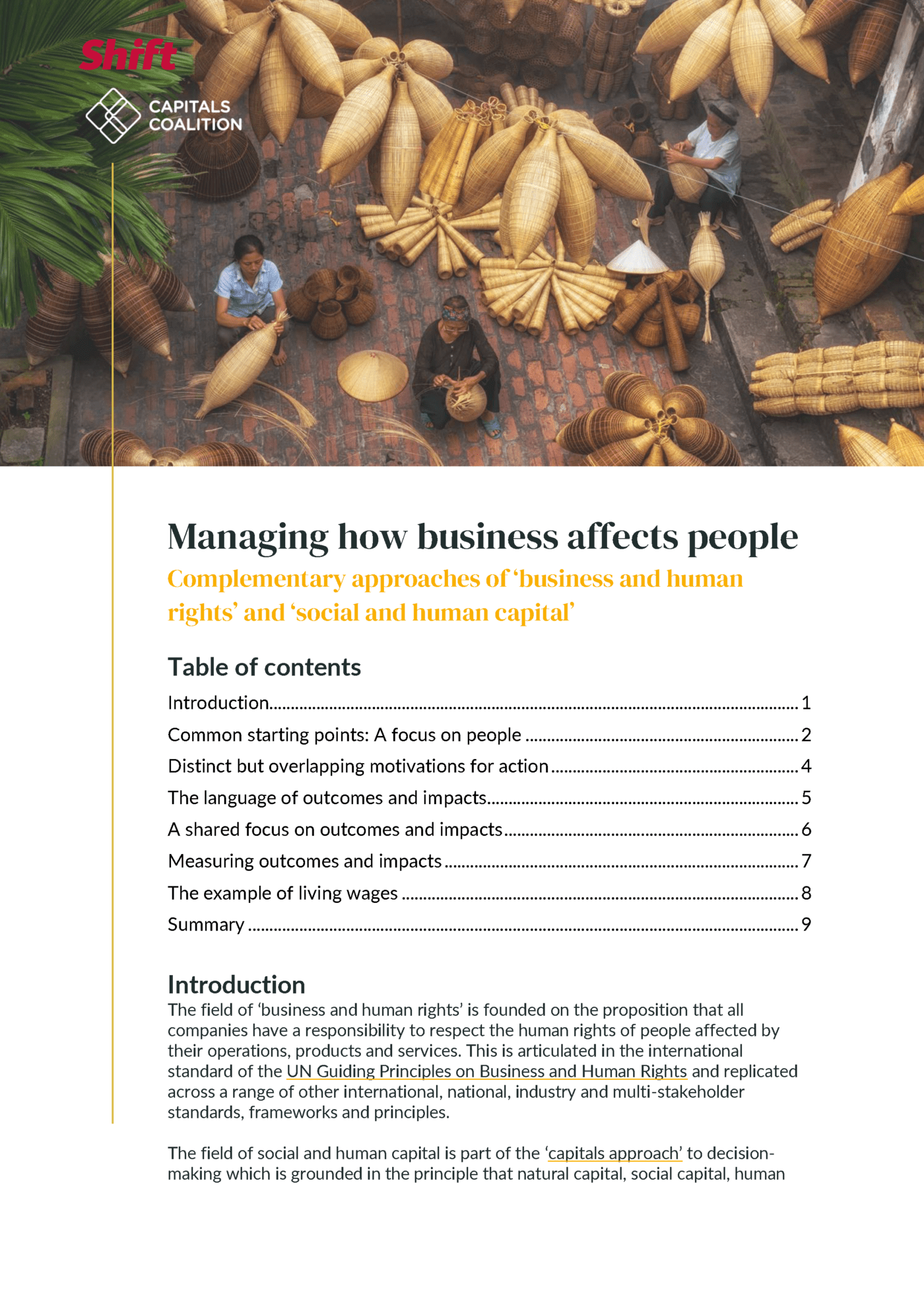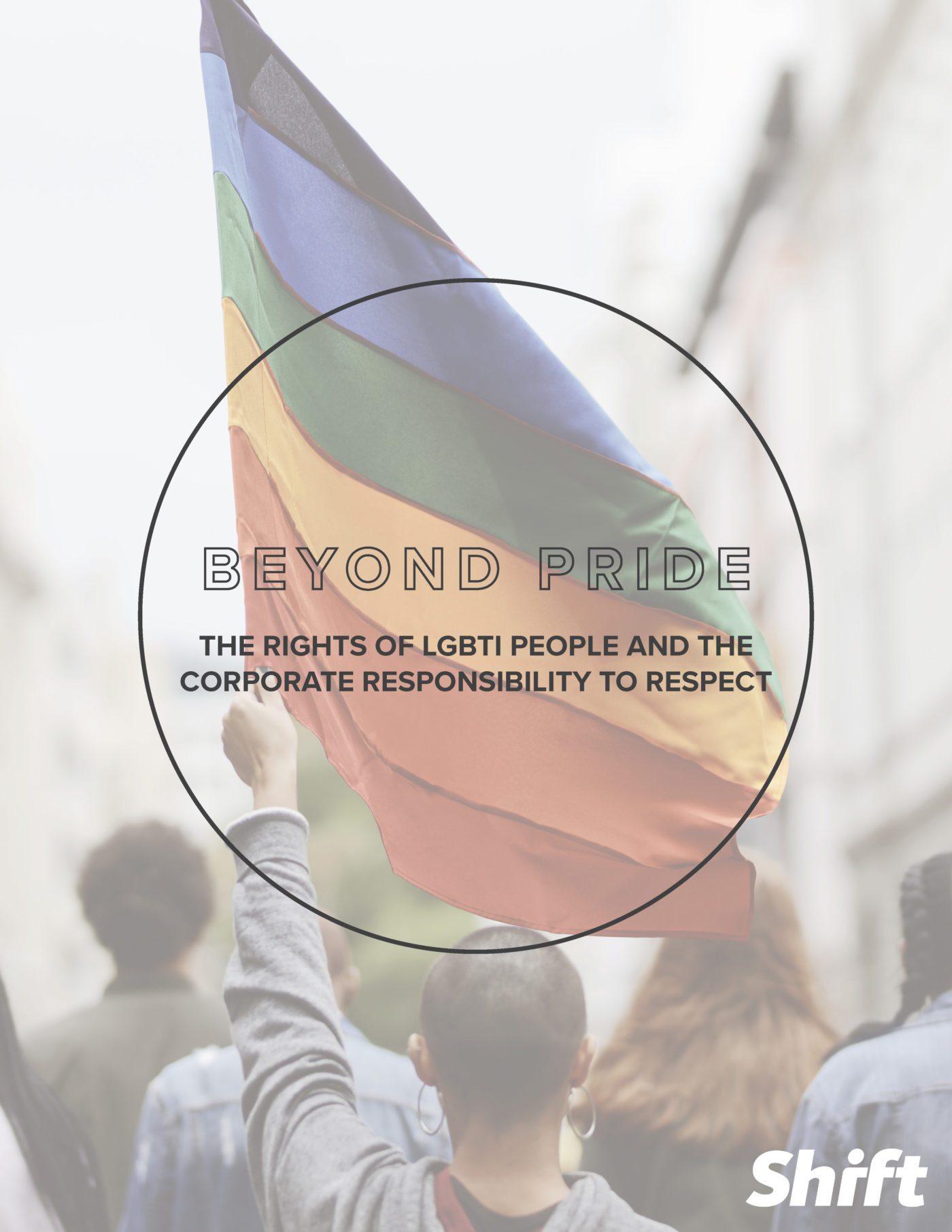This guidance is relevant for companies of all sectors but may be particularly helpful for public and private sector financial institutions. It draws on Shift’s work with the International Finance Corporation to explore the relationship between human rights due diligence and the IFC’s Performance Standards.
Summary
High risk circumstances are situations in which the likelihood of severe human rights impacts is greatest. Human rights due diligence (HRDD) consists of the processes that help businesses become aware of the actual and potential human rights impacts on people associated with their business and take appropriate action to prevent and address those impacts.
From the perspective of the United Nations Guiding Principles on Business and Human Rights (UNGPs), high risk circumstances should be the highest priority for company action since they present the greatest risks to individuals. In such situations, it is therefore especially critical for companies to conduct effective HRDD. Moreover, high risk circumstances for human rights often present high risk to the business as well, including commercial, reputational, investor related and legal risks. This convergence creates a constructive opportunity for human rights leaders within companies to gain the necessary buy in for identifying and addressing human rights risks and impacts.
While it is particularly critical for HRDD to be effective in high risk circumstances, those circumstances can also pose unique challenges for a business’ HRDD processes. High risk circumstances are more complex and fluid. There may be practical difficulties in engaging directly with some affected individuals and groups. The capacity to manage identified risks and impacts may be beyond the sole control of the business enterprise.
Key lessons and insights from business practitioners, further elaborated in this resource, include:
- To understand the source of risk, and determine where there are high risk circumstances, companies can ask themselves a set of targeted questions, looking at the operating context, the nature of the company’s business relationships, the nature of the company’s business activities, and the types of people who could be affected by the company’s activities (or activities of its business relationships). A listing of these diagnostic questions is an annex in this resource.
- Engage internal stakeholders in ways that: (a) raise awareness of high risk circumstances, (b) create expectations about identifying and escalating these types of risks, (c) ensure that due diligence is ongoing and responsive to changes in circumstances.
- Engage external stakeholders in ways that: (a) are integrated into more robust strategies, (b) involve independent third parties in support of company efforts, (c) enable the business to push information to stakeholders and empower stakeholders to push information to the company.
Across these insights and examples, one crosscutting message becomes clear: while the tendency within many companies is to seek greater control over and protection of information as risks increase, in reality, enhanced transparency is critical for success.




